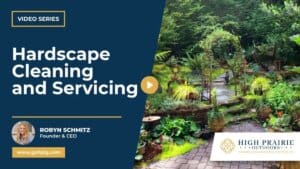There are many benefits to having a tree in a garden. Not only are they a great focal point in your yard, but also they offer far more than its visual appeal. They provide shade, security, help to improve the environment, and offer substantial rewards to a garden and your landscaping.
Overall, many homeowners enjoy the advantages of having a tree in their outdoor living space. However, sometimes their existence can become quite a hassle, primarily when they become too large for the property. When its size extends beyond what is considered acceptable, it poses an unwelcoming risk. So, cutting them down is adopted to manage the large size and growth of the tree.
Tree topping is often considered an option. This is an action that, in simple terms, involves reducing the height of a tree. The myth surrounding this action is that it is a professional practice. Let’s examine the results of tree topping below.
What Is Tree Topping?
Tree topping is the act of removing or cutting off the top of a tree. It is also identified as tipping, hat-racking, canopy reduction, stubbing back, rounding over, heading and a few other names. Many individuals resort to performing this action for the purpose of shrinking a tree. When this is done, the height of the tree is diminished, leaving behind stubs and lateral branches.
Unfortunately, with this form of pruning, the terminal bud or shoot is detached. It is so far removed that no lateral branch is left to fulfill the role of the terminal shoot, and the growth pattern is affected. Hence, individuals end up with trees that appear bushier. Therefore, as opposed to effectively reducing the size of their tree, they have instead created a tree that is high-maintenance and requires regular pruning.
Disadvantages of Tree Topping
Affects Its Appearance
This form of pruning has a detrimental impact on trees, its aesthetic appeal, homeowners and their properties. As for its appearance, tree topping initially creates the look of a mutilated tree. It leaves behind unattractive stubs that make the tree look flawed and disfigured. Due to the improper techniques that many individuals adopt with this practice, trees lose their natural form. Instead of improving the appearance of the tree, they are left damaged.
As the tree begins to grow leaves, unwanted branches that spring upright and are dense begin to develop. These are known as water sprout regrowth, which grows at a rapid rate. As it develops rapidly, it will adopt its unique height but will be deprived of its natural shape.
Impacts Its Health
Branch wounds typically occur with tree topping. These injuries take some time to heal, and instead of repairing successfully, they often become vulnerable to terrible attacks. The infiltration of pests, fungal decay, and fatal diseases impede their growth. Trees that were once healthy become a breeding ground for harmful microorganisms and infections.
Additionally, tree topping makes a tree open to increased sun exposure on its trunk, branches and bark. This has an unfavorable effect on trees resulting in severe bark damage. Thus, tree-topping offers more harmful results than good.
Becomes A Hazard
Many homeowners do not realize the seriousness of tree topping. They often assume that it is beneficial for them and their home. However, this improper form of pruning can wreak havoc to you and your property. Damaged and decaying stubs are more inclined to be harmed by winds and terrible storms. Deterioration reduces their strength, making them vulnerable to breakage, which increases potential damage to people and your property.
Without a doubt, trees that have been inadequately cut in this manner become a liability. Should any injury result from these trees, homeowners are responsible for the damage. Therefore, a lawful landscaper should be considered for correctly pruning your tree.
High Prairie Outdoors
Tree topping is not a professional practice. Avoid being convinced by unlawful arborists and landscapers into believing that it is a specialized skill. It should not be practiced as it elicits more harmful results than anything else.
As expert landscapers at High Prairie Outdoors, we pride ourselves on delivering exceptional services. Therefore, we do not resort to tree topping or cutting down trees improperly. We happily implement practices that are safe and beneficial for the tree and homeowner.
If you are seeking reputable services for your landscaping needs, we are here to help. Need landscape help from a local expert? Click “Get Started” today.




